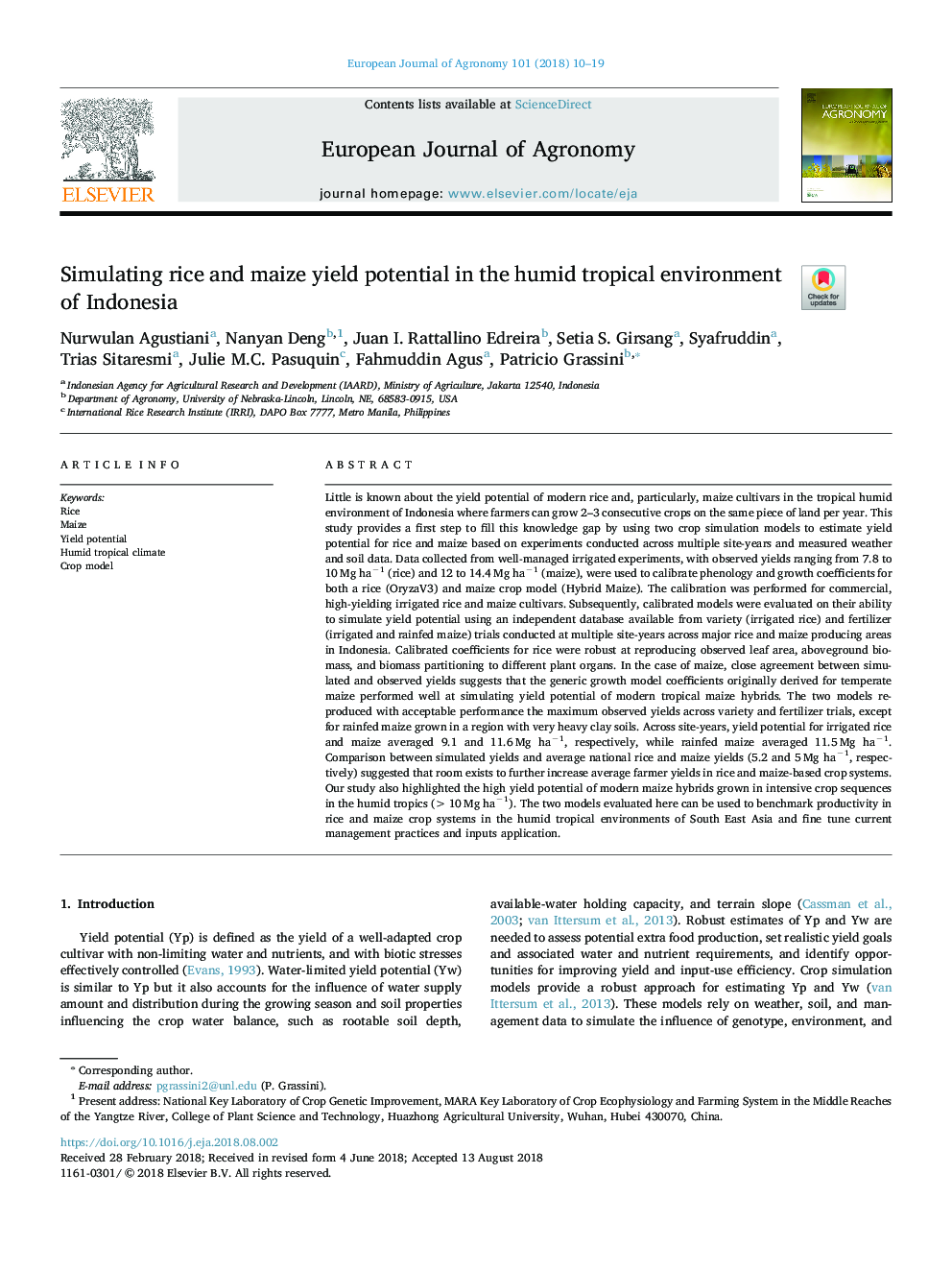| Article ID | Journal | Published Year | Pages | File Type |
|---|---|---|---|---|
| 8953084 | European Journal of Agronomy | 2018 | 10 Pages |
Abstract
Little is known about the yield potential of modern rice and, particularly, maize cultivars in the tropical humid environment of Indonesia where farmers can grow 2-3 consecutive crops on the same piece of land per year. This study provides a first step to fill this knowledge gap by using two crop simulation models to estimate yield potential for rice and maize based on experiments conducted across multiple site-years and measured weather and soil data. Data collected from well-managed irrigated experiments, with observed yields ranging from 7.8 to 10â¯Mg haâ1 (rice) and 12 to 14.4â¯Mg haâ1 (maize), were used to calibrate phenology and growth coefficients for both a rice (OryzaV3) and maize crop model (Hybrid Maize). The calibration was performed for commercial, high-yielding irrigated rice and maize cultivars. Subsequently, calibrated models were evaluated on their ability to simulate yield potential using an independent database available from variety (irrigated rice) and fertilizer (irrigated and rainfed maize) trials conducted at multiple site-years across major rice and maize producing areas in Indonesia. Calibrated coefficients for rice were robust at reproducing observed leaf area, aboveground biomass, and biomass partitioning to different plant organs. In the case of maize, close agreement between simulated and observed yields suggests that the generic growth model coefficients originally derived for temperate maize performed well at simulating yield potential of modern tropical maize hybrids. The two models reproduced with acceptable performance the maximum observed yields across variety and fertilizer trials, except for rainfed maize grown in a region with very heavy clay soils. Across site-years, yield potential for irrigated rice and maize averaged 9.1 and 11.6â¯Mg haâ1, respectively, while rainfed maize averaged 11.5â¯Mg haâ1. Comparison between simulated yields and average national rice and maize yields (5.2 and 5â¯Mg haâ1, respectively) suggested that room exists to further increase average farmer yields in rice and maize-based crop systems. Our study also highlighted the high yield potential of modern maize hybrids grown in intensive crop sequences in the humid tropics (>10â¯Mg haâ1). The two models evaluated here can be used to benchmark productivity in rice and maize crop systems in the humid tropical environments of South East Asia and fine tune current management practices and inputs application.
Keywords
Related Topics
Life Sciences
Agricultural and Biological Sciences
Agronomy and Crop Science
Authors
Nurwulan Agustiani, Nanyan Deng, Juan I. Rattallino Edreira, Setia S. Girsang, Syafruddin Syafruddin, Trias Sitaresmi, Julie M.C. Pasuquin, Fahmuddin Agus, Patricio Grassini,
